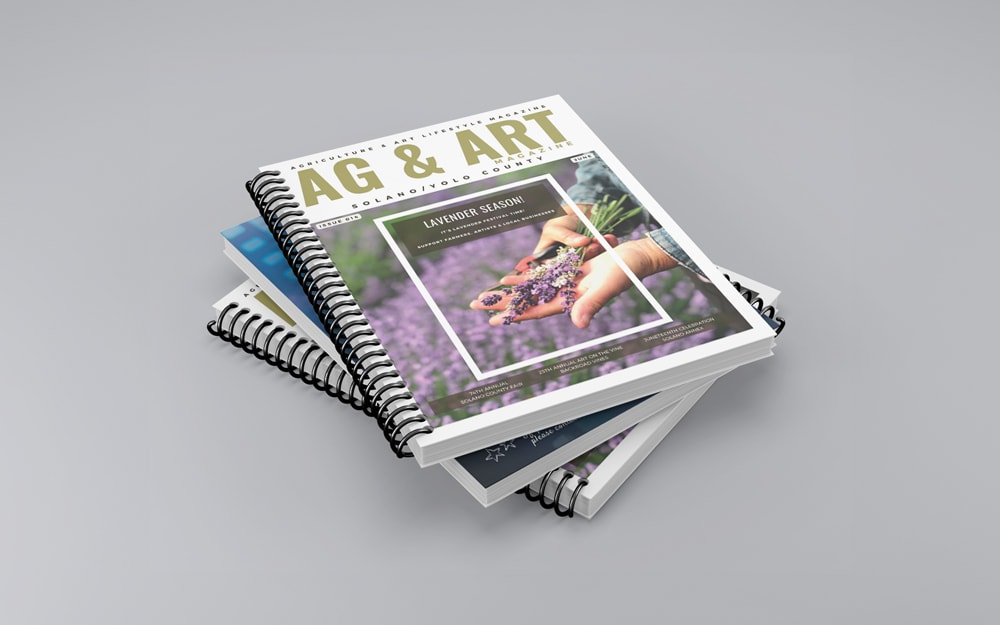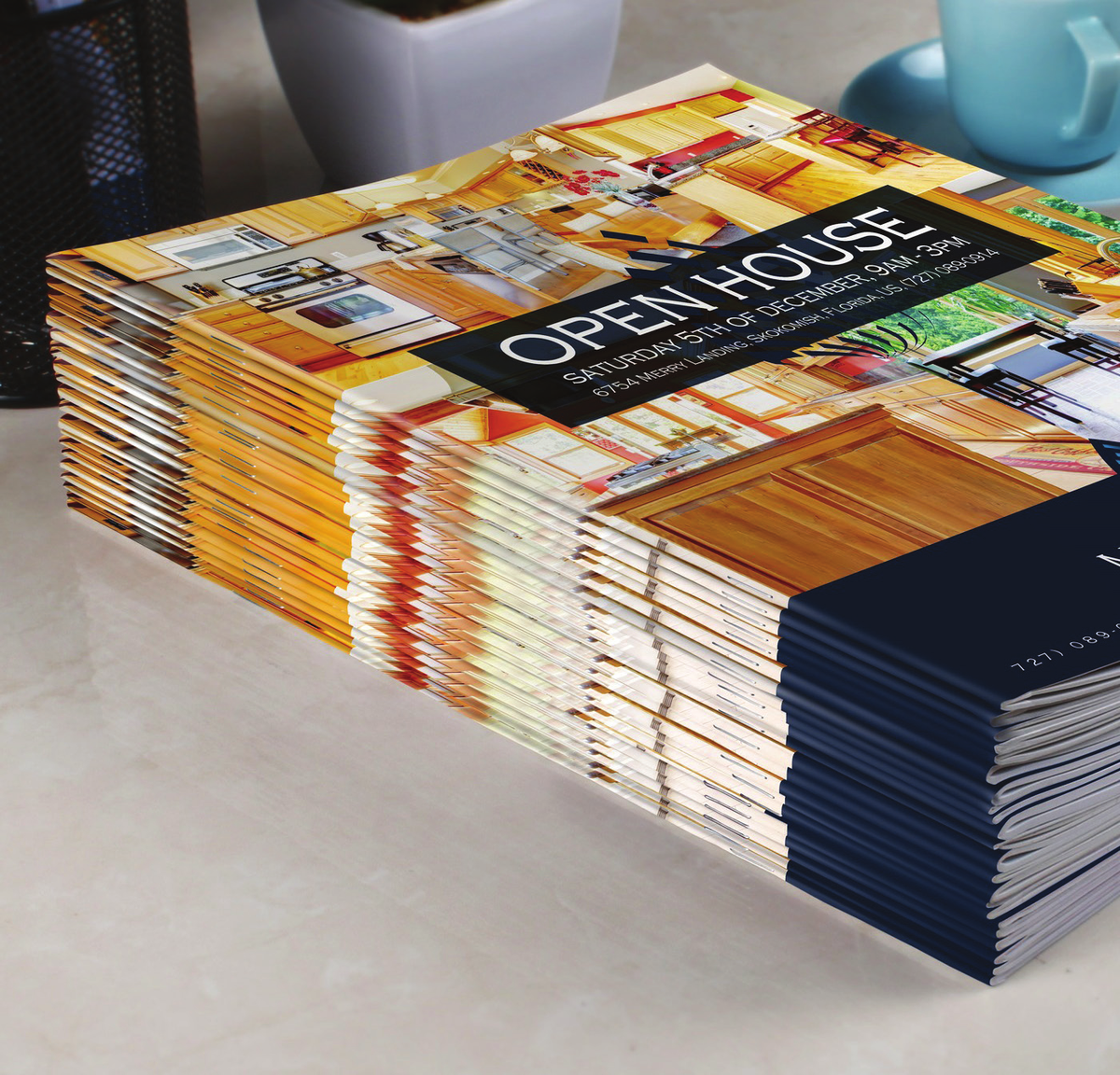Booklet Printing FAQs: Everything You Need to Know Before You Order
Booklet Printing FAQs: Everything You Need to Know Before You Order
Blog Article
The Vital Guide to Recognizing Brochure Printing Options and Techniques
The process of booklet printing includes several factors to consider that can greatly influence the final item. From selecting the proper layout and size to recognizing the nuances of binding approaches, each option plays an essential duty. Additionally, aspects such as paper stock and printing strategies more affect the effectiveness of the booklet. As one navigates these alternatives, it becomes important to understand how they interconnect and what that implies for the total result.
Comprehending Booklet Layouts and Dimensions
When thinking about pamphlet printing, recognizing the various layouts and dimensions offered is necessary for attaining the preferred presentation. Pamphlets can be generated in numerous layouts, including saddle-stitched, spiral-bound, and perfect-bound, each offering unique advantages. Common dimensions vary from standard letter (8.5 x 11 inches) to smaller alternatives like A5 (5.8 x 8.3 inches), permitting adaptability based on content and target audience.Selecting the proper size can influence both the layout and visitor involvement. Bigger dimensions may fit visually driven material, while smaller layouts may be a lot more portable and user-friendly. Furthermore, the variety of pages impacts the selection of binding technique, as thicker brochures may require tougher bindings. Ultimately, recognizing these elements allows for a much more customized technique, guaranteeing that the last product lines up with the designated message and visual, improving the total effectiveness of the interaction.
Choosing the Right Paper Supply

Binding Approaches: Considerations and options
When it involves binding approaches for brochures, a number of choices are available, each with unique advantages. Saddle stitch binding offers an economical remedy for thinner brochures, while perfect binding strategies supply a more polished try to find thicker publications. Wire-O binding stands out for its longevity and simplicity of use, making it optimal for papers that call for versatility.
Saddle Stitch Binding
Saddle stitch binding supplies a useful and economical service for constructing booklets, making it a popular selection among publishers and businesses. This binding method involves folding sheets of paper in half and stapling them along the fold line, creating a orderly and cool appearance. Typically ideal for brochures with a lower page count, saddle sewing is ideal for magazines, pamphlets, and instructional products. The simpleness of this method allows for quick production and is typically favored for marketing products or brief runs. Nevertheless, it is important to keep in mind that saddle stitch binding might not appropriate for thicker booklets, as the spinal column might not hold up under raised weight. In general, it remains a reputable choice for several printing tasks.
Perfect Binding Techniques
Perfect binding is a commonly made use of strategy that provides a professional and sleek coating to magazines and booklets. This approach involves gluing the web pages with each other at the back utilizing a strong adhesive, enabling a tidy side and the capability to hold a larger variety of pages compared to saddle sewing. Perfect binding is especially suitable for thicker booklets, such as brochures and yearly reports, where a strong, flat spinal column is wanted. In addition, it uses the option for a printed cover that can be created to boost visual appeal. Nonetheless, considerations such as page matter, paper weight, and the planned use of the pamphlet should be thought about, as they can affect sturdiness and total top quality.
Wire-O Binding Options
Wire-O binding, understood for its toughness and flexibility, provides an outstanding alternative for booklets that require simple web page transforming and a professional appearance. This binding approach utilizes a series of metal loopholes that hold web pages safely, enabling them to lie flat when open. It is specifically ideal for magazines, manuals, and discussions due to its robust nature. Wire-O binding is offered in various shades and sizes, suiting different web page counts and densities. Additionally, it allows the inclusion of covers and tabs, improving the pamphlet's total aesthetic. Factors to consider for Wire-O binding include the option of wire color, the dimension of the loops, and the extent of customization desired, every one of which can profoundly affect the end product's look and functionality.
Digital vs. Offset Printing: Which Is Best for You?
When choosing a printing method for brochures, understanding the differences in between electronic and counter printing is crucial. Digital printing utilizes modern-day technology to generate top notch prints promptly and affordably, making it perfect for short runs or jobs requiring fast turnaround times. It permits for customization, offering the capability to publish on-demand with very little waste.In comparison, offset printing is a conventional approach that masters creating large quantities with regular quality. It entails moving ink from a plate to a rubber blanket, after that to the paper, which causes lively colors and precise information. Counter printing generally requires longer configuration times and is a lot more affordable for larger volumes.Ultimately, the selection between electronic and balance out printing depends on project requirements, budget, and wanted amount. For small, time-sensitive jobs, electronic could be the very best selection, while offset might be better for larger, top quality productions.

Designing Your Brochure: Tips and Finest Practices
When creating a booklet, careful interest blog to format, typeface selection, and color use can substantially boost its efficiency. A well-structured design overviews the reader's eye, while suitable font styles ensure readability and communicate the preferred tone. Additionally, efficient usage of shade can evoke emotions and highlight vital details, making the overall style extra impactful.
Picking the Right Format
Exactly how can one properly choose the best design for a pamphlet? Initially, it is essential to examine the booklet's objective and target audience. A clean, arranged design enhances readability and involvement. Utilizing a grid system can help in straightening aspects constantly, developing a professional look. In addition, integrating visual hierarchy via varying dimensions and positionings of images and text can guide the viewers's eye and emphasize crucial information. It is additionally essential to leave adequate white room, which stops congestion and allows for much better emphasis. Checking various designs through mock-ups can provide understanding right into how the layout performs in real-world scenarios, guaranteeing that the last product satisfies both practical and aesthetic demands. Practical Picking Ideal Font Styles
An appropriate font can substantially enhance the total layout of a brochure, matching the design and reinforcing the material's message. The option of fonts need to think about readability, particularly for body message, as it assures the details comes to all viewers. Sans-serif typefaces are frequently favored for electronic formats, while serif fonts can provide a standard feeling in published materials. It's advisable to limit font choices to two or 3 to maintain aesthetic comprehensibility. Furthermore, font style dimension plays a crucial duty; headings must be unique however not frustrating, while body message need to fit for reading. When picking typefaces, alignment with the booklet's theme and target audience is vital for reliable interaction and visual charm.
Reliable Use Shade
Color functions as an effective device in pamphlet layout, assisting and shaping understandings reader feelings. It can stimulate sensations of depend on, excitement, or peace, depending upon the shades selected. Developers need to think about color theory concepts, making sure that the selected combination straightens with the brochure's message and target audience. Utilizing cozy colors like red and orange can develop necessity, while cooler tones like green and blue foster tranquility.Additionally, contrast plays an important function; complementary colors can enhance readability and aesthetic allure. Consistency in shade use throughout pages further enhances brand name identification and communication. Eventually, effective shade application not just captures interest but additionally enhances the booklet's function, making it a crucial facet of effective layout.
Completing Touches: Coatings and Unique Effects
While lots of think about the content and format of a booklet the most vital aspects, the completing touches, such as layers and special impacts, play a crucial duty in improving its overall appeal. Coatings can supply protection and durability, guaranteeing that the booklet endures deterioration. Matte coatings provide a sophisticated, non-reflective surface, while glossy coatings can make shades show up even more vivid and eye-catching. Unique effects, like embossing or aluminum their website foil marking, include a tactile measurement that can produce a memorable impression. These strategies can highlight certain locations, accentuating vital details or producing aesthetic passion. Additionally, UV layer can give a high-shine surface that raises the overall look.Together, these ending up touches not just enhance the pamphlet's visual however additionally interact professionalism and reliability and attention to information, inevitably leaving a lasting effect on the reader.
Price Considerations for Booklet Printing
Understanding the various expense factors to consider for pamphlet printing is important for companies and services aiming to optimize their spending plans. Secret elements affecting costs include the selection of ink, paper, and binding approaches. Better materials, such as premium paper or specialized inks, normally boost the total expense. In addition, the dimension and web page matter of the pamphlet play a significant duty; larger booklets call for even more resources and time to produce.Another crucial factor to consider is the printing technique, whether digital or offset, as each has its very own rates framework and suitability for different quantities. Businesses must additionally factor in layout costs, which can vary based upon complexity and using specialist services. Inevitably, delivery and handling fees can include in the total, especially for big orders. By reviewing these elements, organizations can make informed decisions that line up with their monetary capabilities while accomplishing the wanted high quality in their published materials.
Regularly Asked Questions
What Are the Ecological Effects of Pamphlet Printing?
The ecological impacts of booklet printing consist of logging from paper manufacturing, carbon discharges from transport, visite site and waste generation from discarded products - Booklet Printing. Sustainable practices, such as utilizing recycled paper and green inks, can minimize these effects
Exactly How Can I Guarantee Color Precision in My Brochure?
To assure color precision in a brochure, one should use adjusted displays, employ specialist color accounts, carry out examination prints, and pick top notch printing solutions that provide shade matching and proofing choices for finest outcomes.
What Is the Common Turn-around Time for Booklet Printing?
The regular turnaround time for booklet printing varies relying on the complexity and amount - Booklet Printing. Normally, it ranges from a couple of days to two weeks, influenced by elements such as publishing methods and ending up demands
Are There Minimum Order Quantities for Booklet Printing?

Can I Print Booklets in Multiple Languages?
Publishing booklets in numerous languages is feasible. Several printing solutions use alternatives for bilingual or multilingual designs, enabling effective interaction. Cautious planning guarantees that create aspects fit numerous languages without jeopardizing readability or looks. In addition, factors such as paper stock and printing methods further affect the effectiveness of the brochure. When thinking about pamphlet printing, comprehending the different styles and dimensions offered is essential for accomplishing the desired discussion. When picking a printing approach for brochures, comprehending the differences between electronic and counter printing is vital. In addition, the dimension and page count of the pamphlet play a substantial function; bigger pamphlets need even more sources and time to produce.Another important factor to consider is the printing technique, whether electronic or balanced out, as each has its own pricing framework and viability for different amounts. The ecological impacts of brochure printing consist of deforestation from paper manufacturing, carbon emissions from transport, and waste generation from thrown out products.
Report this page